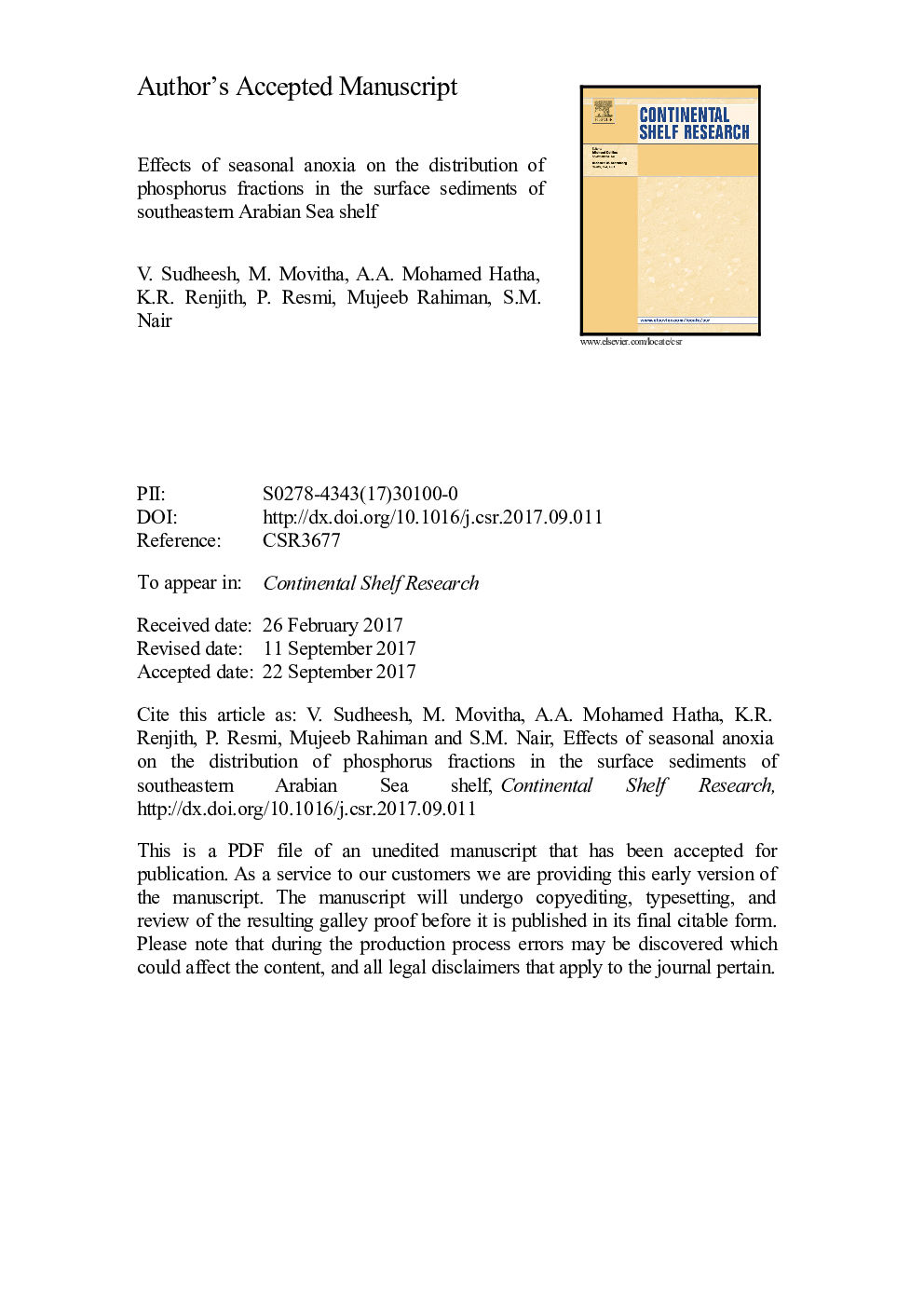| Article ID | Journal | Published Year | Pages | File Type |
|---|---|---|---|---|
| 8884147 | Continental Shelf Research | 2017 | 28 Pages |
Abstract
The seasonal upwelling along the southeastern Arabian Sea (SEAS) brings cold, nutrient-rich low oxygen subsurface water to the continental shelf. The subsurface oxygen deficiency due to upwelling is severe in some years, the intensity of which could profoundly influence the nutrient cycling along the SEAS. Herein, we studied the effect of seasonal anoxia on fractionation of phosphorus during the peak upwelling period of August 2013. Abundance of five fractions of phosphorus (P), namely exchangeable or loosely sorbed P (Pads), iron-bound P (PFe), authigenic P (Paut), detrital apatite plus other inorganic P (Pdet) and organic P (Porg), in surface sediments of SEAS shelf has been studied using a sequential extraction procedure (SEDEX) to examine their distributions and sources. Total P (TP) concentrations ranged from 209 to 1081 µg gâ1 with an average of 508 ± 256 µg gâ1. Among the five P fractions, the authigenic P was the dominant species, representing about 60% of TP. The relative abundance of P fractions was in the order: Paut>Pdet>Porg>PFe> Pads. Multivariate analyses revealed that the P fractions were primarily associated with the organic constituents and fine sediments. The hypoxic bottom condition associated with summer monsoon upwelling significantly reduced the concentrations of PFe, Pads and Porg in the surface sediments. The enhanced release of organic bound and iron oxides bound P under low oxygen condition was evident from the enhanced C/P and N/P ratios and lower C/N ratio in the sediments. The intense biomineralization of organic matter and reduction of Fe-Mn oxides due to the periodic anoxia resulted in the transformations of their associated P fractions and enhanced accumulation as authigenic calcium phosphate mineral.
Related Topics
Physical Sciences and Engineering
Earth and Planetary Sciences
Geology
Authors
V. Sudheesh, M. Movitha, A.A. Mohamed Hatha, K.R. Renjith, P. Resmi, Mujeeb Rahiman, S.M. Nair,
